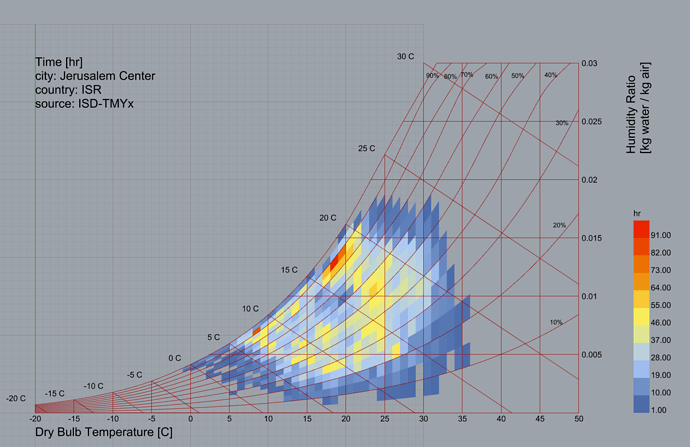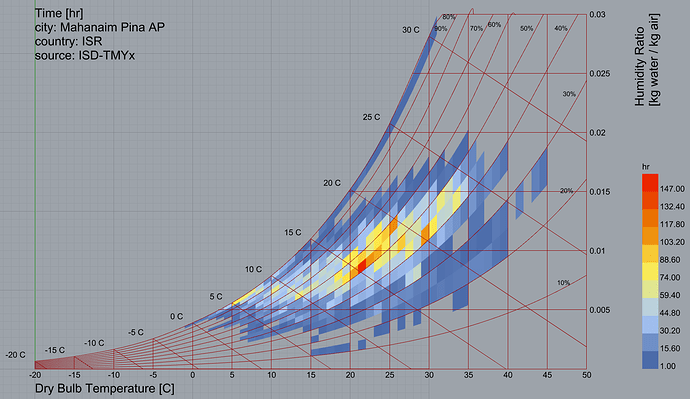Hi @chris,
Thanks for the update.
I agree with your view of “divide and conquer”. If it makes things easier for developing (and debugging) i can agree more.
For me the comfort and strategies polygons are a must (BTW, just yesterday had a class when i showed them the chart and the strategies. They need to do some analysis of it). I’ll have this class again next semester, so hopefully this will be functional before that.
Just tested the brand new LBT Psychrometric chart. Spotless. I really love how things are working, fast, clean and clear. This is a very good job (I said that before but i can’t say enough).
Just for the fun see the charts below. The epws are from climate.onebuilding.org. More than funny maybe some concerns can arise from what you see. The top image shows some strange behaviour with the chart lines (RH) and the bottom one shows that the data has some issues with the strip at the 100% RH line.
Just bring the other components on. I’m ready to test … 
Thanks,
-A.

